Abstract
The insecticides carbaryl and Folithion were tested on a village scale in the vicinity of Lagos, Nigeria, by the WHO Insecticide Testing Unit in 1963. Whereas carbaryl reduced the density of anophelines and culicines for two months, Folithion greatly reduced their density for six months or more. The mortality among mosquitos leaving treated dwellings and caught in window-traps in the carbaryl-treated village was fairly high for only one month after treatment, but in the Folithion-treated village it was high for seven months. Bio-assay results showed that Folithion was effective on mud for two-and-a-half months, on wood for seven months, and on thatch for six months. Carbaryl was not effective on mud; on wood it was effective for nine months or more, and on thatch for six to nine months.
Anopheles hargreavesi was found to be more exophilic than Anopheles gambiae or culicines.
Full text
PDF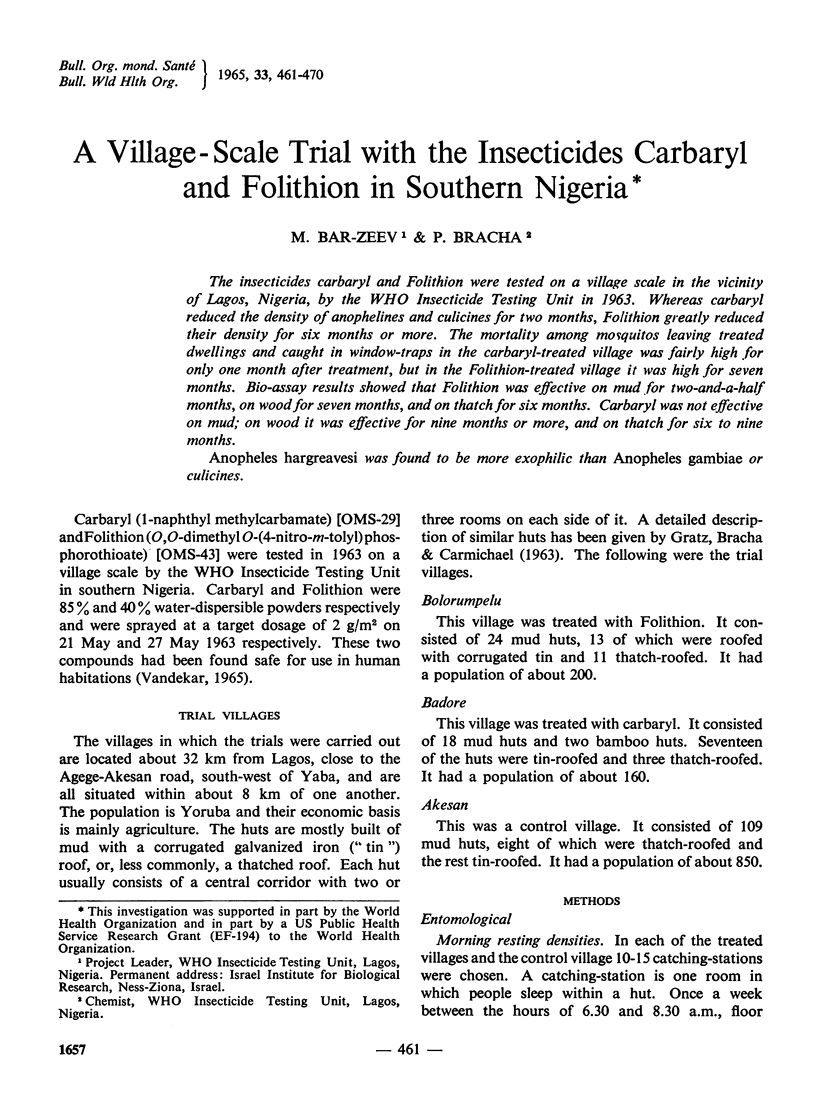
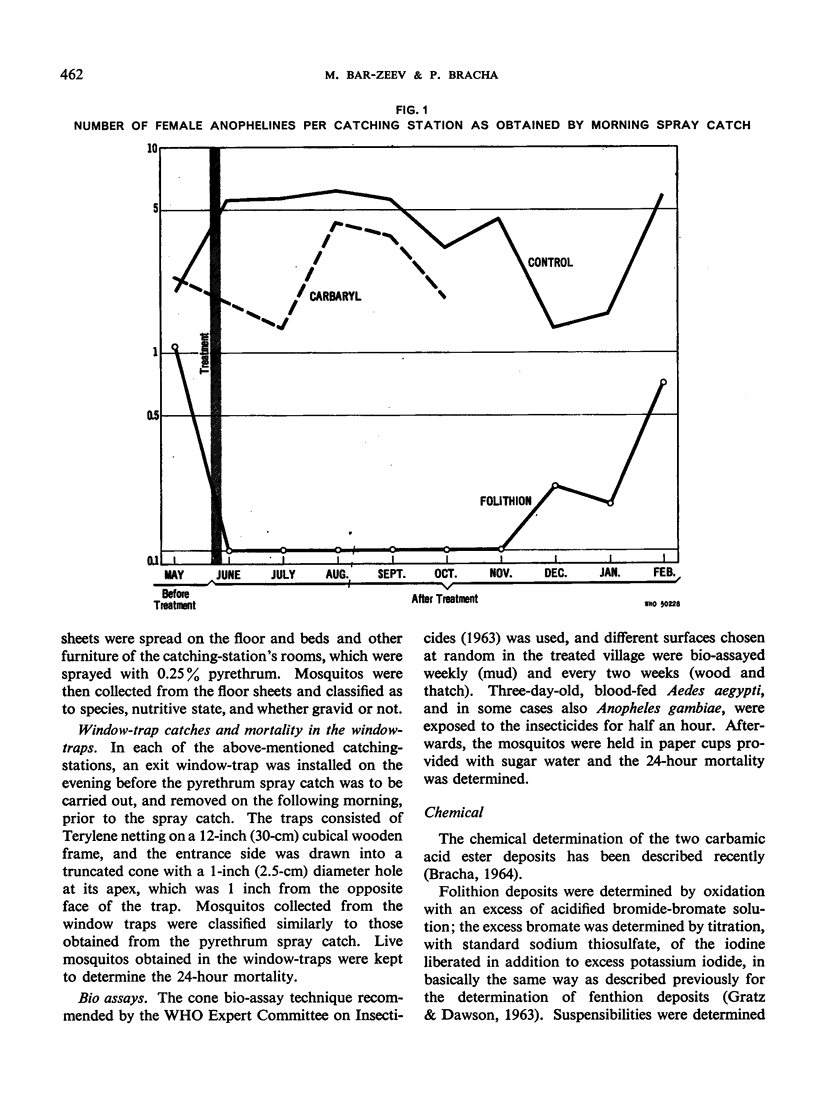
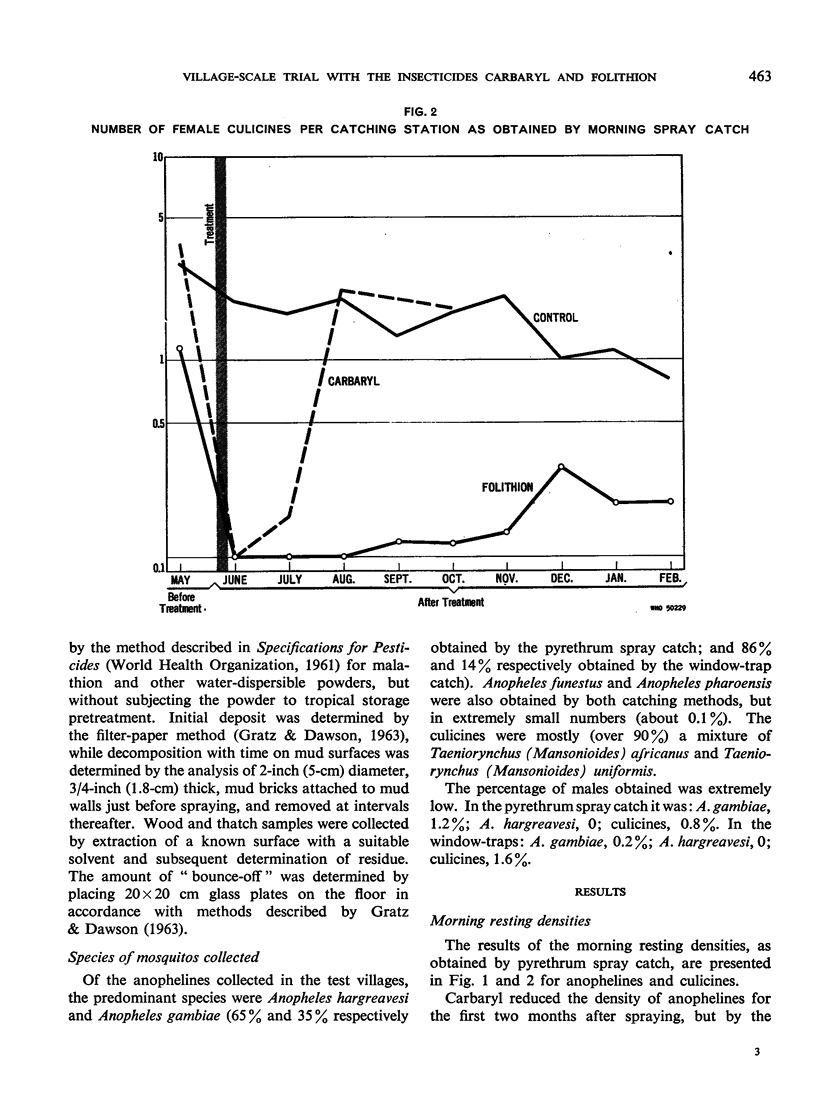
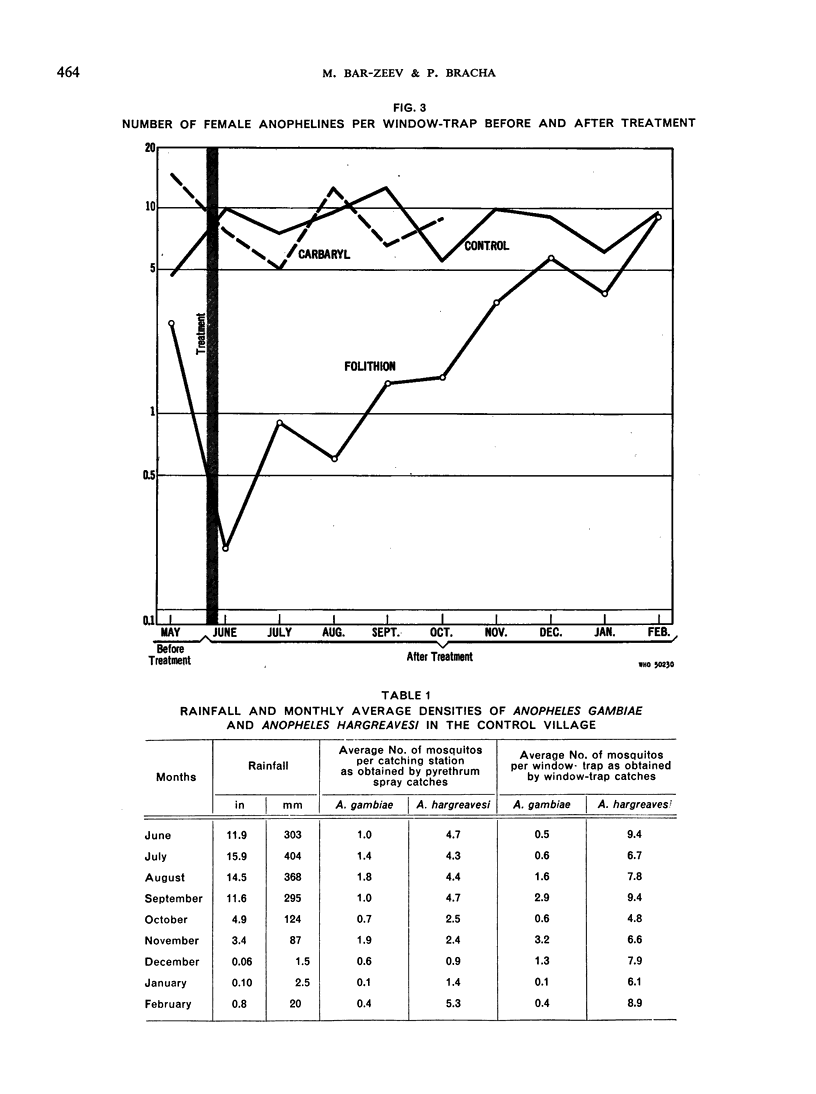
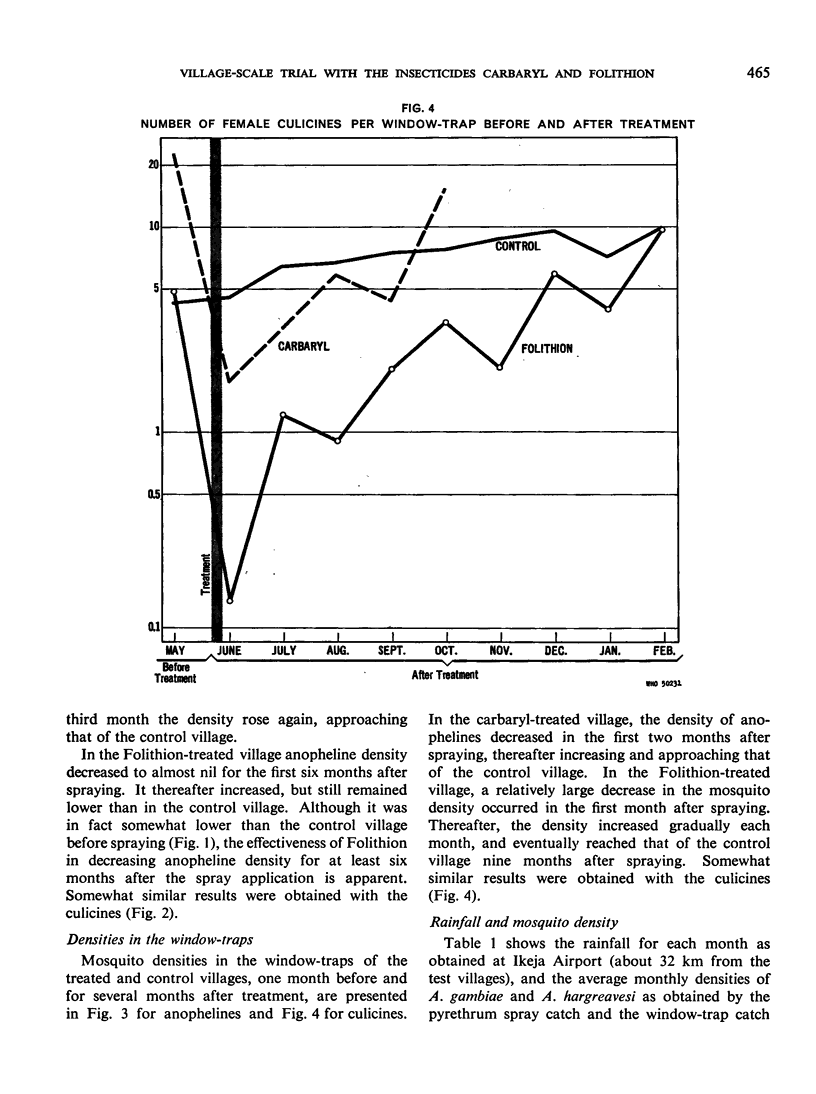
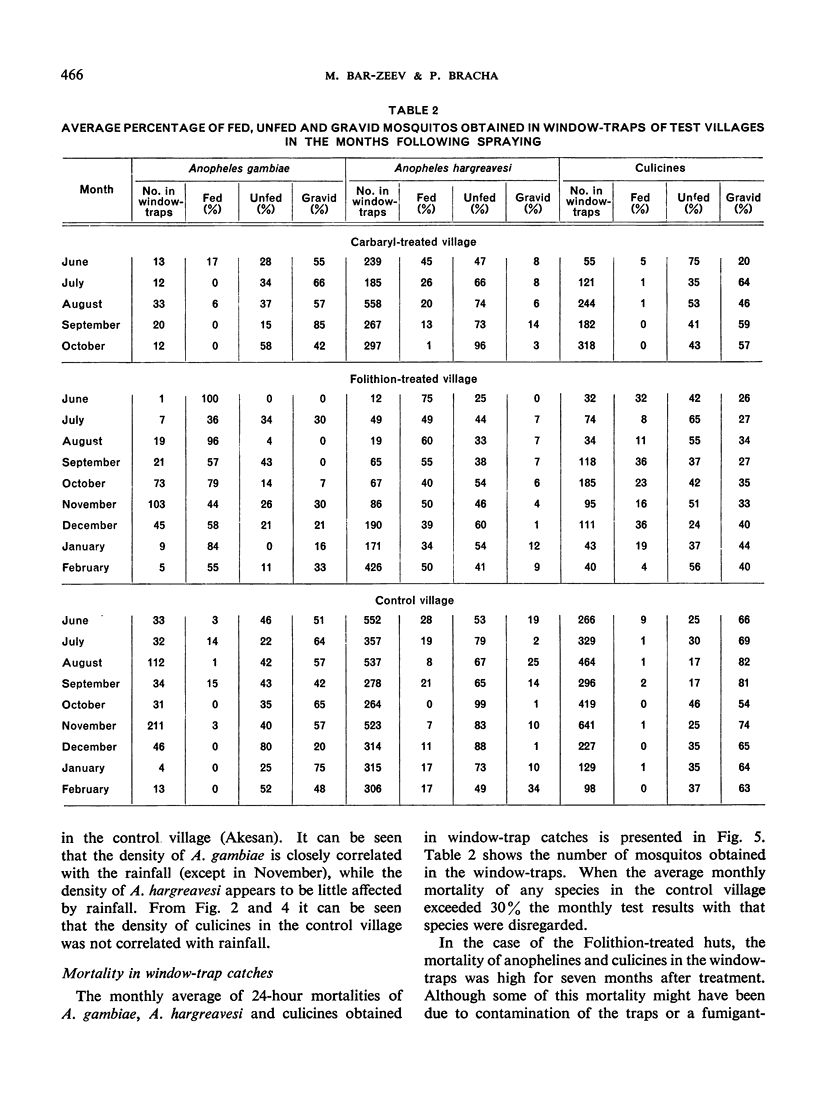
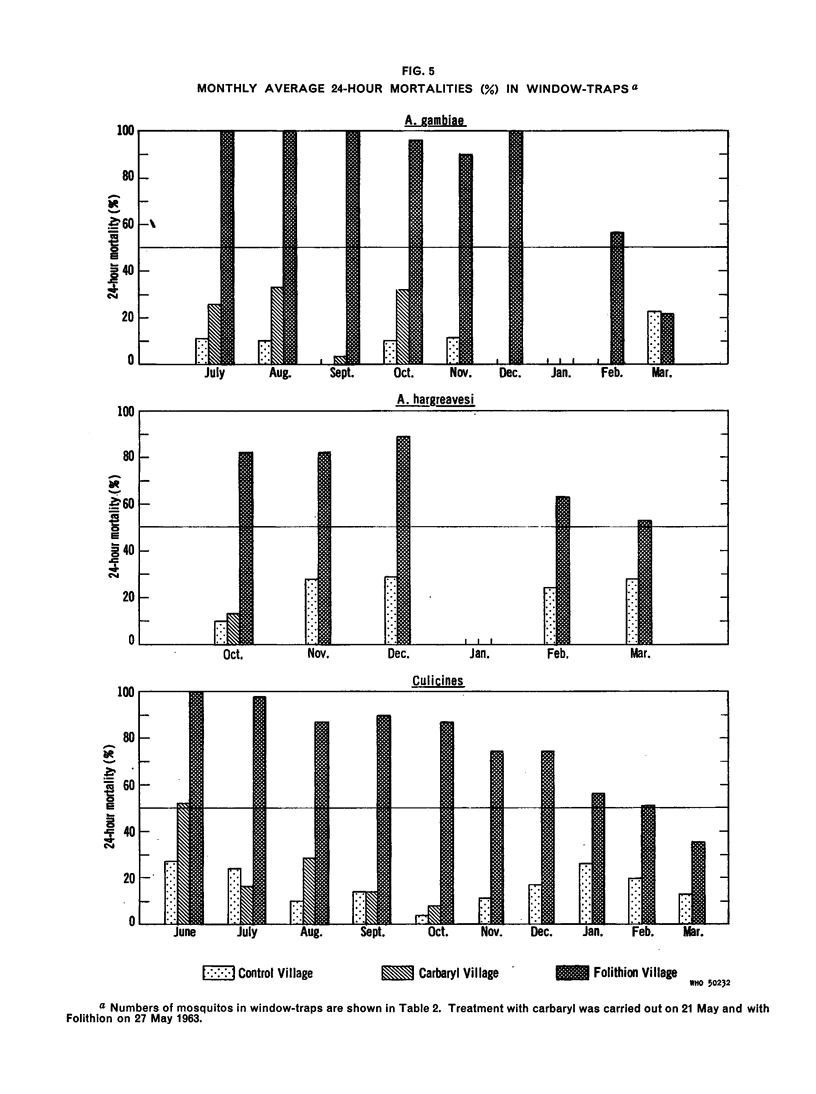
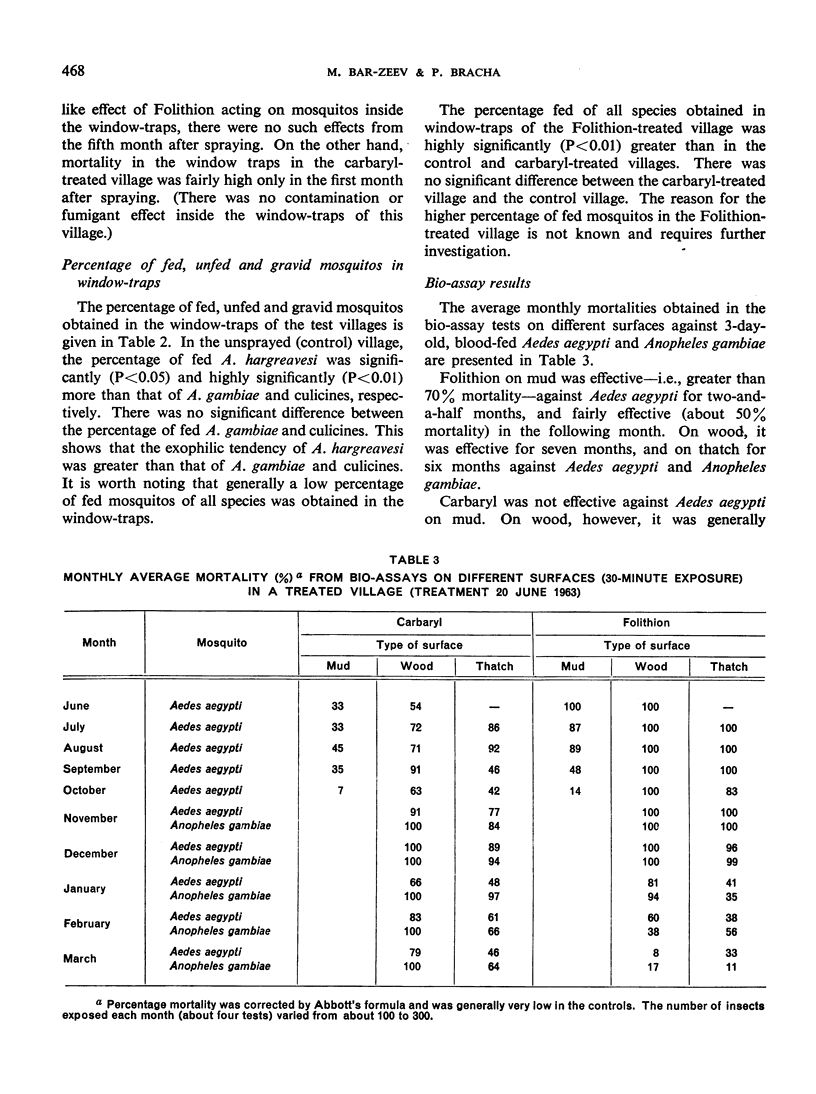
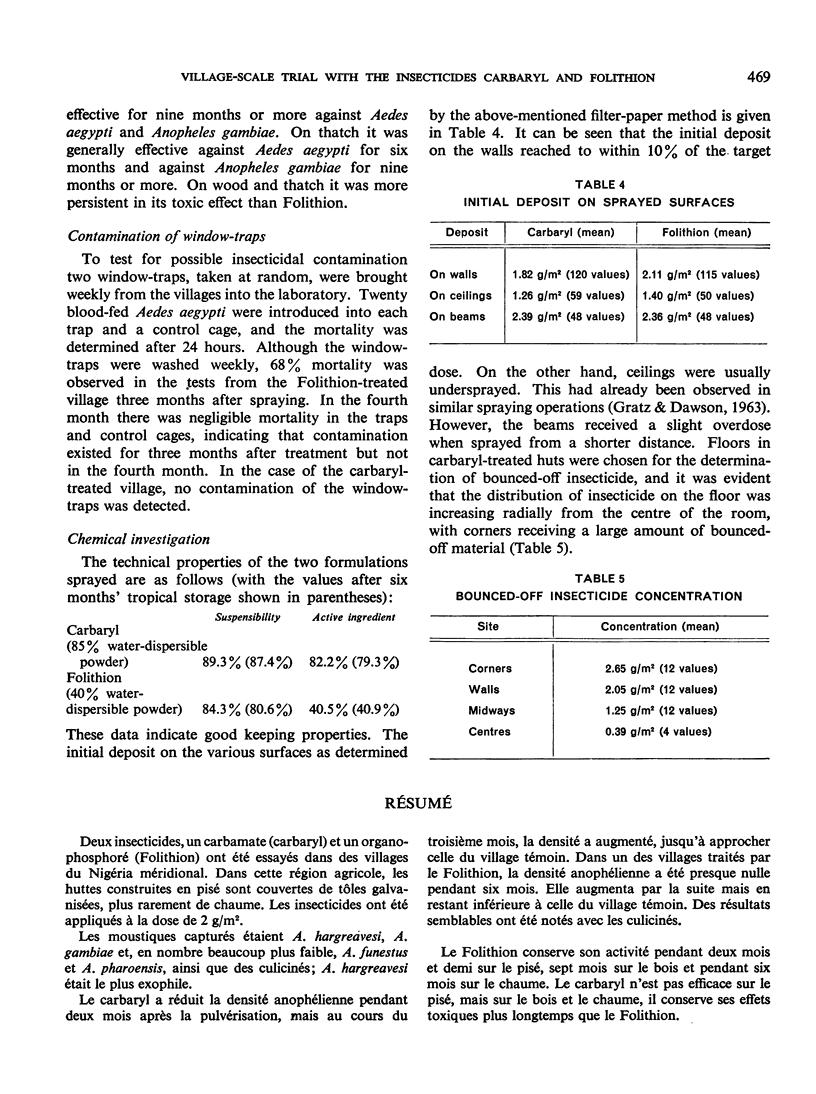
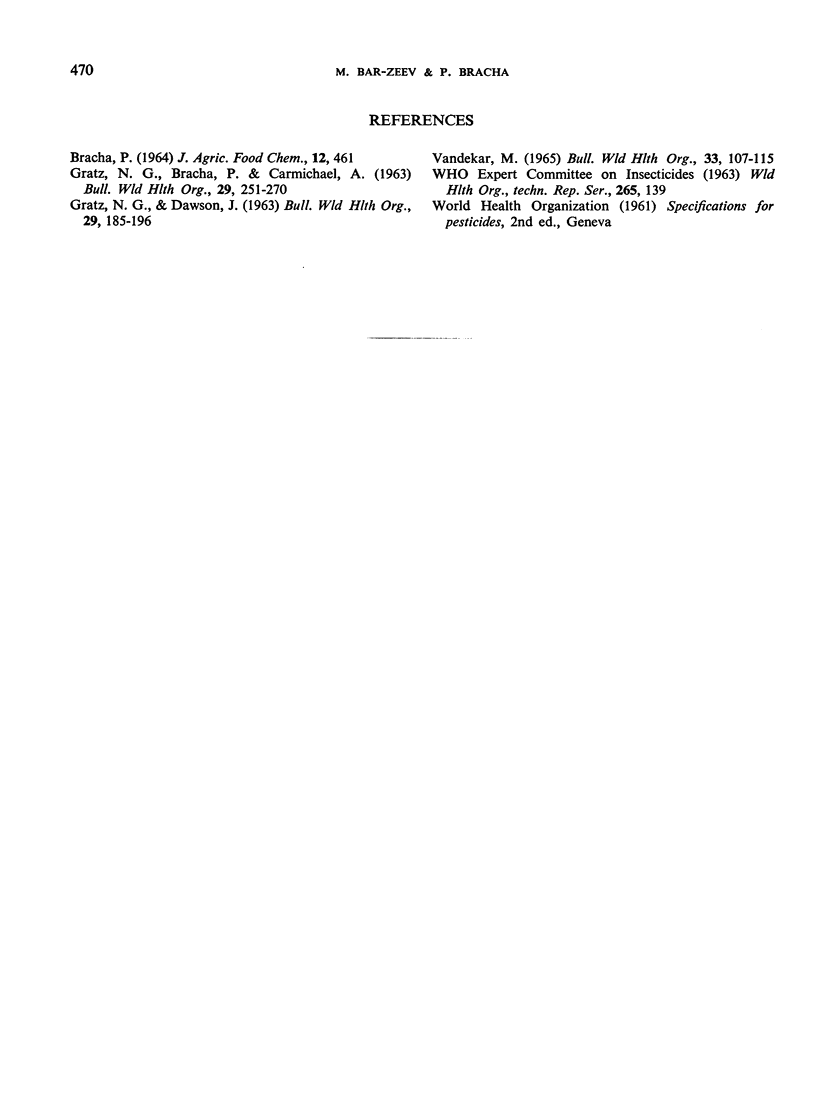
Selected References
These references are in PubMed. This may not be the complete list of references from this article.
- GRATZ N. G., BRACHA P., CARMICHAEL A. A VILLAGE-SCALE TRIAL WITH DICHLORVOS AS A RESIDUAL FUMIGANT INSECTICIDE IN SOUTHERN NIGERIA. Bull World Health Organ. 1963;29:251–270. [PMC free article] [PubMed] [Google Scholar]
- GRATZ N. G., DAWSON J. A. THE AREA DISTRIBUTION OF AN INSECTICIDE (FENTHION) SPRAYED INSIDE THE HUTS OF AN AFRICAN VILLAGE. Bull World Health Organ. 1963;29:185–196. [PMC free article] [PubMed] [Google Scholar]
- Vandekar M. Observations on the toxicity of carbaryl, folithion and 3-isopropylphenyl n-methylcarbamate in a village-scale trial in Southern Nigeria. Bull World Health Organ. 1965;33(1):107–115. [PMC free article] [PubMed] [Google Scholar]


